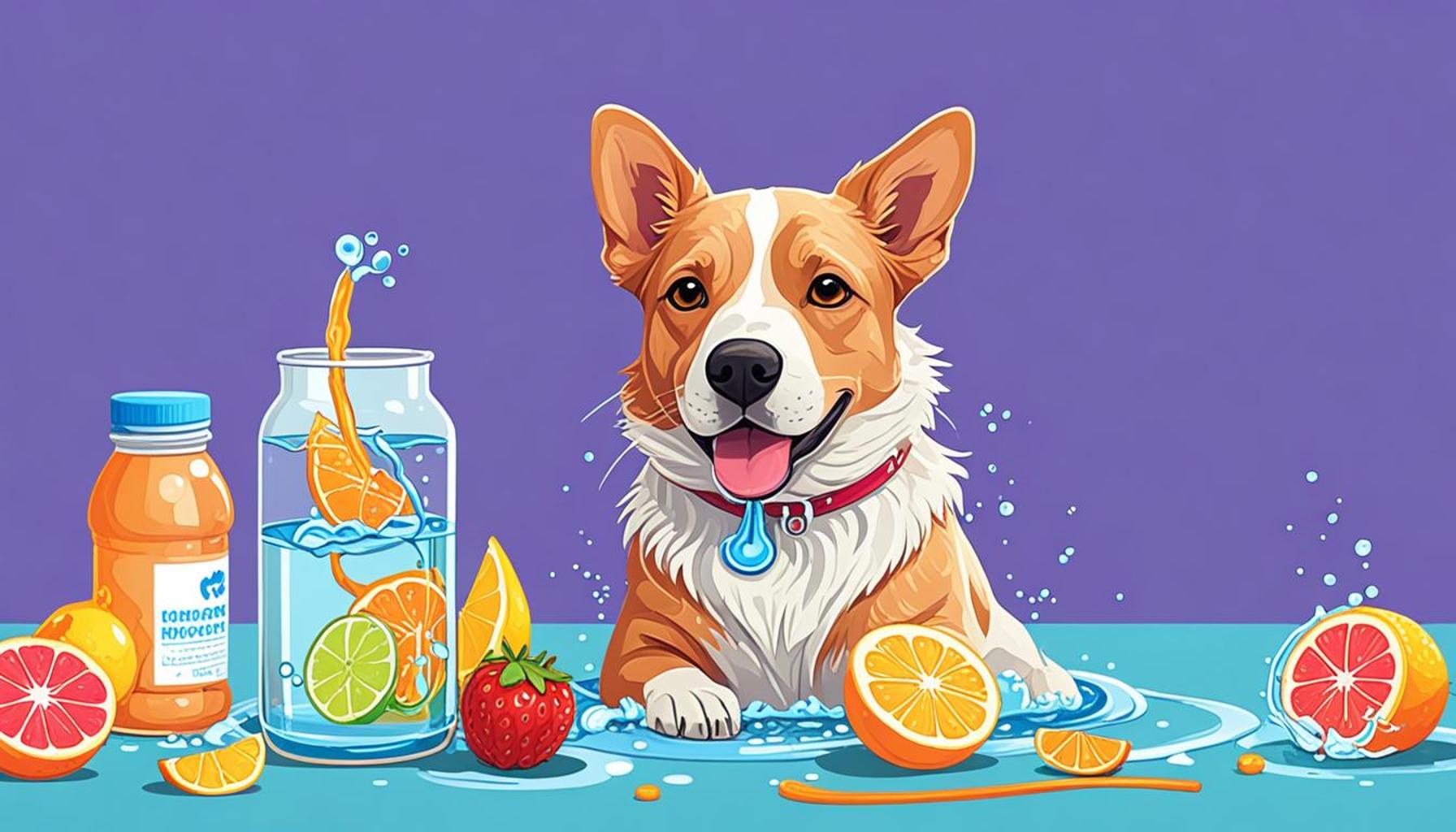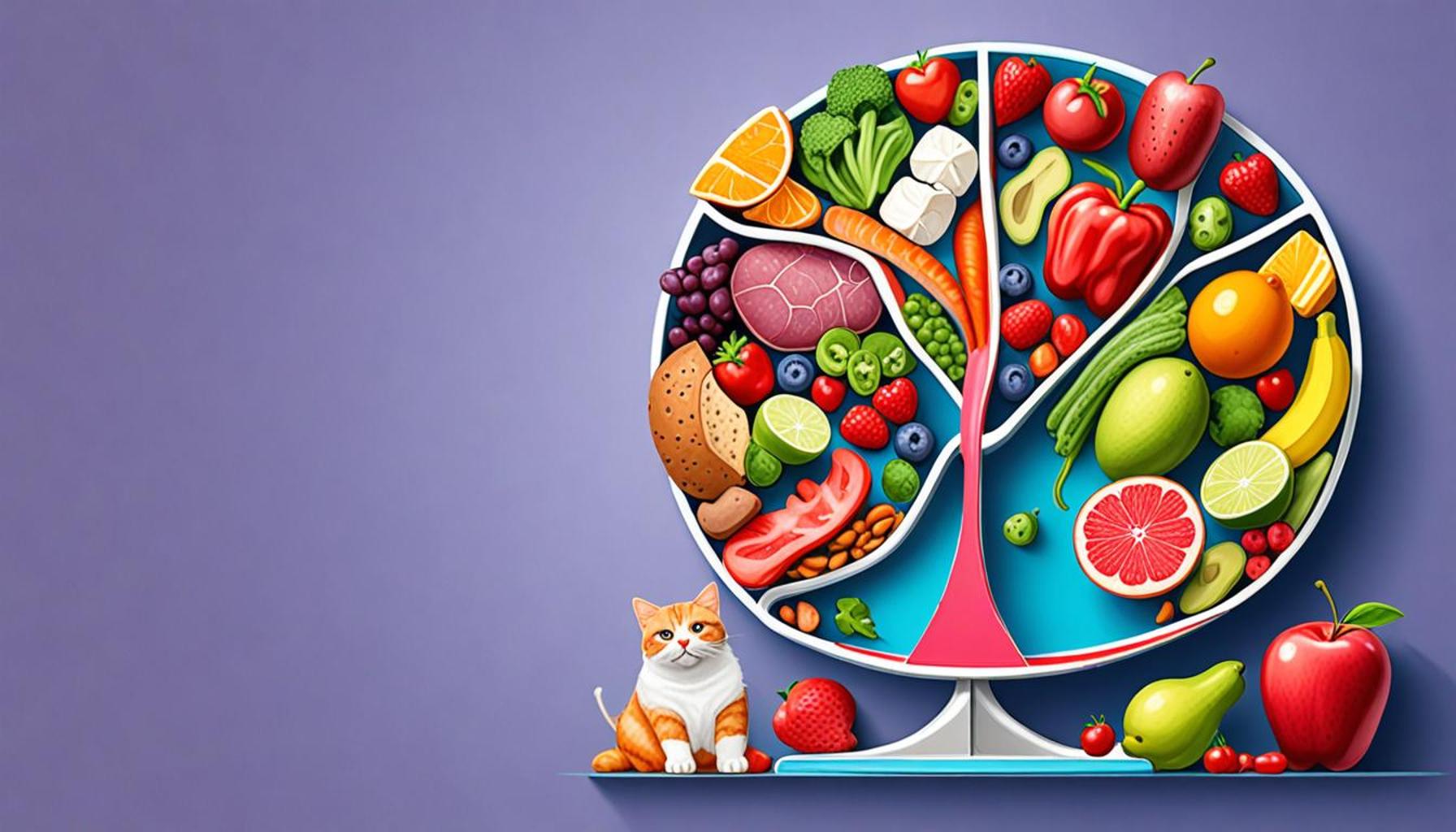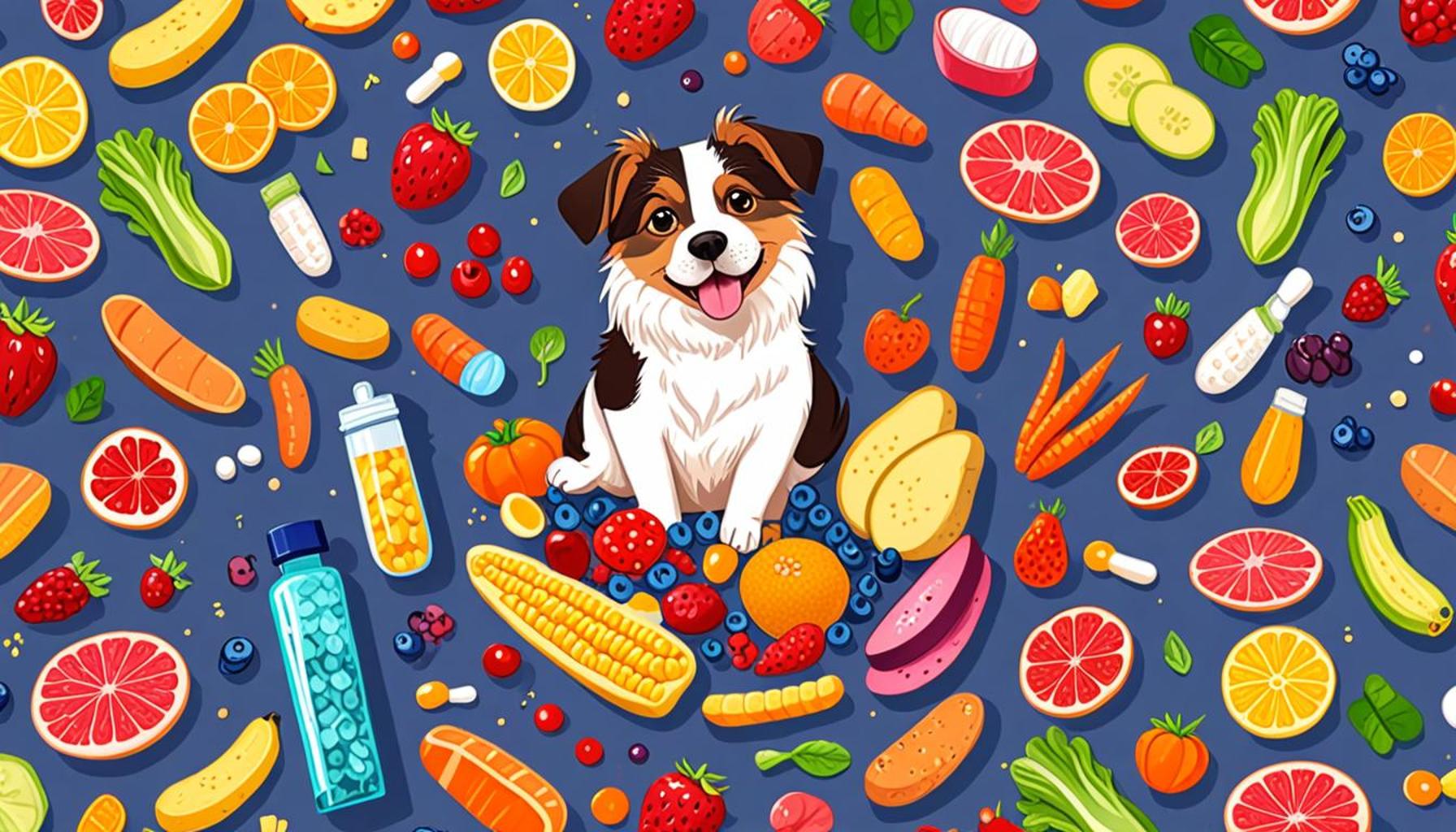The Importance of Hydration in Pet Health: Tips and Strategies

The Vital Role of Hydration in Pet Health
Every pet owner understands that ensuring the health of their furry companions is a paramount concern, one that goes far beyond just providing food and shelter. One of the cornerstones of maintaining their well-being is proper hydration. Water plays a critical role in numerous bodily functions, including digestion, temperature regulation, nutrient transport, and joint lubrication. Therefore, understanding how to keep your pets hydrated can be the difference between a thriving pet and one that faces health complications.
Even slight dehydration can lead to significant health issues in pets. For instance, according to the American Veterinary Medical Association, dehydration can affect the function of vital organs and even lead to kidney failure in extreme cases. That’s why understanding your pet’s hydration needs is essential. Here are some crucial points every pet owner should consider:
- Species-Specific Needs: Different pets have unique hydration requirements influenced by their species, size, age, and level of activity. For example, larger breeds such as Great Danes might need more water compared to smaller breeds like Chihuahuas. Also, active dogs generally need more water compared to those that are less active.
- Seasonal Changes: Weather significantly impacts hydration needs. During hot summer months, pets are likely to require more water to prevent overheating. Similarly, cold weather can sometimes decrease their thirst drive, prompting owners to monitor their intake closely to avoid dehydration in winter.
- Food Types: The type of food you provide also affects hydration. Pets that consume dry kibble typically need more water compared to those who are given wet food, which has higher moisture content. For instance, a pet consuming mainly dry food may require as much as a cup of water for every cup of kibble they consume.
Although many pet owners may underestimate the importance of hydration, its effects on health can be profound. Signs of dehydration can be subtle, yet they are serious. Without adequate water intake, pets may suffer from:
- Dry skin and coat: A well-hydrated pet typically has a shiny coat and supple skin, while dehydration can lead to dryness and flakiness.
- Lethargy: Dehydrated pets may seem dull and uninterested in activities, which can be alarming for any pet owner.
- Urinary issues: Insufficient water intake could lead to urinary tract infections or, more seriously, kidney stones.
Equipping yourself with knowledge about hydration empowers you to make informed decisions for your pets. Simple strategies such as offering fresh water daily, providing wet food, and incorporating water fountains can significantly enhance your pet’s hydration levels. In addition, monitoring your pet’s behavior and coat condition can serve as valuable indicators of hydration status. As you dive deeper into understanding your pet’s needs, you may discover new ways to enhance their health and happiness, ultimately ensuring your four-legged friends lead a vibrant and energetic life.
DISCOVER MORE: Click here to learn about the benefits and risks of homemade diets for pets</a
Understanding Hydration Needs: The Basics
In order to properly understand your pet’s hydration needs, it is essential to recognize the fundamental aspects that influence how much water they require. Hydration is not just about the quantity of water consumed, but also how effectively that water is absorbed and utilized within the body. This requires pet owners to be proactive in assessing their pets’ hydration levels and making necessary adjustments based on several key factors.
1. Age and Life Stage: Just like humans, pets have varying hydration needs throughout their lives. Puppies and kittens, for instance, require more water per pound of body weight compared to adult animals because they are growing rapidly. In contrast, older pets may also have increased hydration needs due to potential health issues such as kidney disease. Regular veterinary check-ups can help assess your pet’s specific hydration needs based on their age and health status.
2. Health Conditions: Many underlying health conditions can alter your pet’s water needs. For example, pets with diabetes or those taking certain medications may have increased thirst. On the other hand, some illnesses such as diarrhea and vomiting can cause a rapid loss of fluids, making it critical for pet owners to monitor and replenish their pets’ hydration status. Consulting a veterinarian is crucial for understanding how health conditions can affect hydration.
3. Physical Activity: The level of activity plays a vital role in determining hydration needs. Pets that engage in active play or exercise will naturally lose more fluids through panting and sweating (in the case of dogs). It’s important to offer them water before, during, and after physical activities to keep them well-hydrated and avoid overheating. A good rule of thumb is to ensure your pet has access to fresh water at all times, particularly after exercising.
Recognizing signs of dehydration can save your pet from potential health risks. Some common symptoms of dehydration in pets include:
- Sunken eyes: This visual cue can indicate that your pet is not getting enough fluids.
- Dry gums: Healthy gums should be moist and pink, while dry or tacky gums may signal hydration issues.
- Excessive panting: While panting is normal, excessive panting can suggest overheating or dehydration.
Pet owners should remain vigilant in observing their pets’ normal behaviors and health indicators to ensure they stay hydrated. Measuring water intake can play an essential role in monitoring hydration levels, especially in households with multiple pets. Simple strategies such as keeping a designated water bowl in multiple locations around the home can promote frequent drinking. Additionally, consider offering ice cubes as a cool treat or incorporating water-rich fruits and vegetables like watermelon into your pet’s diet as another means to enhance hydration.
By maintaining a thoughtful awareness of your pet’s hydration needs, you can significantly contribute to their overall health and longevity. Taking small, consistent steps can lead to rewarding outcomes, ensuring that your beloved companions stay full of life and vigor.
| Advantage | Explanation |
|---|---|
| Prevents Dehydration | Ensures pets maintain optimal health and energy levels. |
| Aids Digestion | Water plays a crucial role in breaking down food and promoting nutrient absorption. |
| Enhances Coat Health | Proper hydration contributes to a shiny and healthy coat, reducing shedding. |
| Regulates Body Temperature | Keeps pets cool, especially during hot weather or after exercise. |
| Supports Kidney Function | Adequate hydration is vital for flushing out toxins and preventing kidney issues. |
Providing your pets with the right amount of water is essential for their overall health. Maintaining proper hydration not only helps in preventing serious health issues but also contributes to their vitality and energy. Regularly monitoring and encouraging your pets to drink water, especially during warmer months, can lead to substantial benefits. Additionally, incorporating moisture-rich foods into their diet can be a smart strategy for improving hydration levels. As you discover more about the nuances of hydration, consider these tips to elevate your pet’s health and well-being further.
LEARN MORE: Click here for effective training tips
Enhancing Hydration: Practical Solutions for Pet Owners
Having established a fundamental understanding of your pet’s hydration needs, the next step involves adopting effective strategies to ensure they remain well-hydrated throughout their lives. Keeping your pet hydrated is not only vital for their physical health but also plays a significant role in their overall mood, energy levels, and wellness. Here, we delve into several practical solutions that can promote optimal hydration in pets.
1. Water Quality: Just as humans prefer clean and fresh water, pets also benefit from high-quality hydration. Ensure that the water you provide is clean and free from contaminants. Change your pet’s water supply daily, and opt for filtered water if possible. Some pets can be particular about the taste or smell of water; experimenting with different types of bowls (ceramic, stainless steel, or glass) may produce better results. Additionally, certain pets are drawn to running water, making pet water fountains an excellent investment for encouraging hydration.
2. Wet Food Preferences: For pets that struggle to drink sufficient water, incorporating wet or canned food into their diet can be highly beneficial. Canned food typically contains a higher moisture content, providing an additional source of hydration. This is particularly useful for cats, which may not always be inclined to drink water. When selecting pet food, look for high-quality options that list real meat as the primary ingredient and are low in fillers, ensuring your pet receives adequate nutrition while also enhancing their fluid intake.
3. Hydration Treats: You can introduce hydration in the form of tasty snacks. Look for specially designed hydration treats or incorporate water-rich fruits and vegetables. For example, sliced cucumbers, blueberries, or cantaloupe are safe and enjoyable for many dogs and cats. However, be mindful of what is safe for your specific pet. Avoid high-sugar fruits and consult with your veterinarian before introducing new foods.
4. Behavioral Reinforcement: Creating a positive association with drinking can encourage your pet to consume more water. Use playful tactics such as engaging your pet in games around the water bowl or rewarding them with praise or treats when they drink. Regularly refreshing their water bowl also plays a virtual role in motivating pets to hydrate. Pets often prefer cool, fresh water, so consider adding ice cubes on hot days to make drinking more appealing.
5. Seasonal Considerations: Seasonal changes can significantly impact your pet’s hydration needs. In the sweltering summer months, when heat and humidity rise, pets tend to lose fluids more quickly due to increased panting and activity. Ensure that your pet has ample access to shade and plenty of water when spending time outdoors. In colder months, dehydration can also sneak up on pets, especially for those being fed dry kibble. Always pay attention to their drinking habits year-round, adjusting their intake as necessary.
6. Regular Monitoring: It is essential to continuously monitor your pet’s hydration levels. One method to assess hydration status is by performing the skin tent test: gently pinch the skin at the nape of the neck and observe how quickly it returns to its original position. A slow return may indicate dehydration. Regular veterinary consultations should include checks on hydration status, and being prepared to identify early signs of dehydration can prevent more serious health issues.
Incorporating these practical tips can help maintain hydration and, in doing so, promote complete pet health. Adopting proactive hydration strategies ensures that pets remain active, energetic, and ready to explore the world alongside their human companions.
DISCOVER MORE: Click here to learn how socialization impacts your pets
Conclusion: Prioritizing Hydration for Your Pet’s Health
In conclusion, hydration is a cornerstone of pet health that often goes unnoticed by many pet owners. By understanding and addressing the specific hydration requirements of your furry companions, you can significantly improve their quality of life and well-being. Implementing practical strategies, such as offering clean water, incorporating moisture-rich foods, and using engaging techniques to encourage drinking, will help ensure that your pets stay hydrated and healthy.
Moreover, being vigilant about your pet’s hydration status is crucial, especially during shifts in seasons. Each pet is unique, and their hydration needs may change based on age, size, activity level, and environmental factors. Therefore, regular check-ins with your veterinarian will be essential in keeping hydration at the forefront of your pet care routine.
Finally, establishing good hydration practices not only benefits your pet’s physical health but also enhances their mental well-being. A hydrated pet is typically more energetic, playful, and responsive, allowing for a stronger bond between you and your beloved animal. Thus, making hydration a priority is not just a matter of health—it’s a way to enrich your pet’s quality of life. Educate yourself on these hydration tips and strategies, and take action today to ensure that your pet enjoys a long, vibrant, and happy life.



